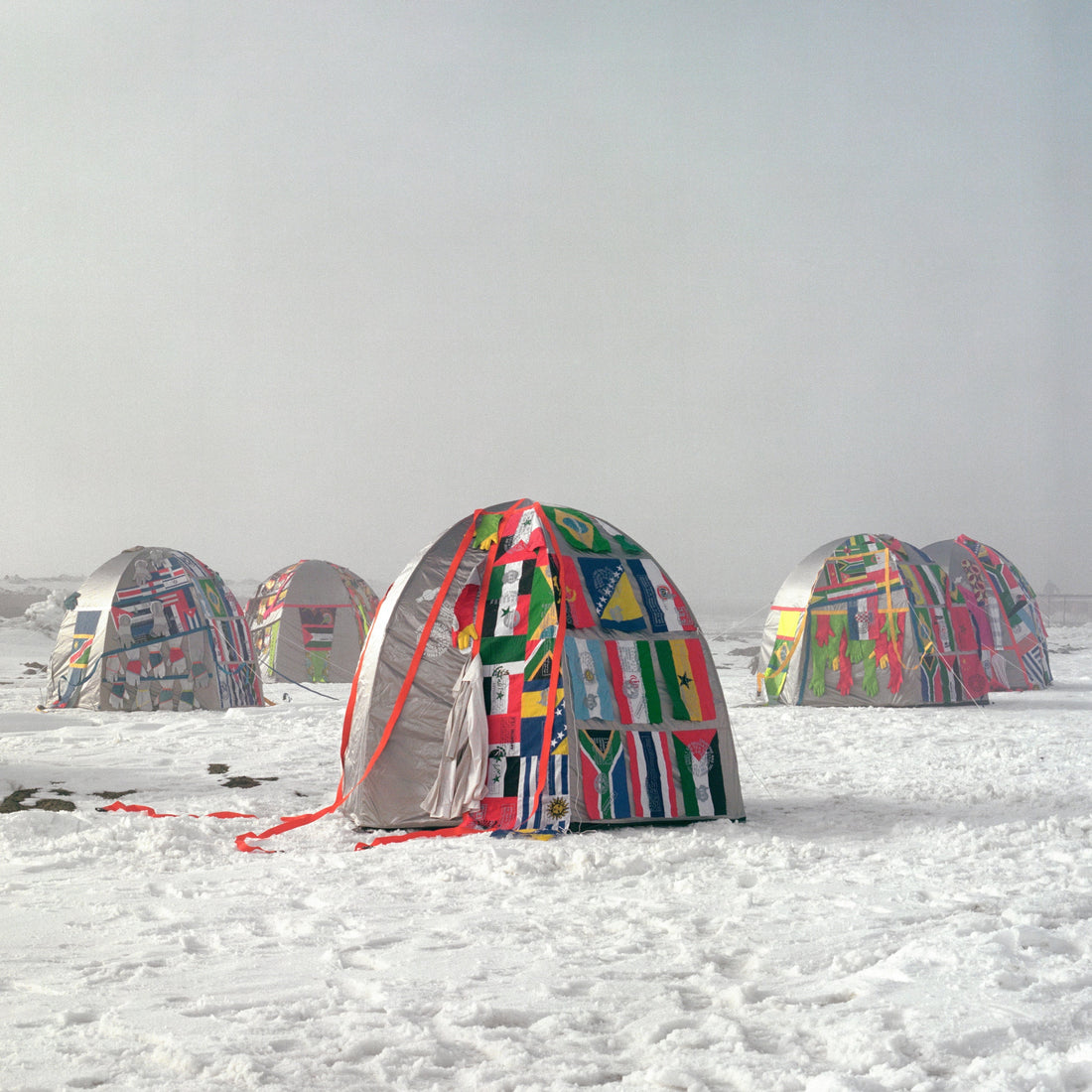
The Future Was Always There: British Textile Biennial 2025
Every other October, the mills and moors of East Lancashire are threaded with new life as the British Textile Biennial (BTB) unfolds across the region. From 2 October to 2 November 2025, this year’s edition turns its gaze both backwards and forwards in time. The Future Was Always There sets the thematic framework, exploring textiles as instruments of invention, survival, and storytelling, while asking how centuries-old knowledge might illuminate pathways to more sustainable futures.
Lancashire’s landscape is thick with textile memory. Burnley’s Grenfell pioneered weatherproof fabrics that clothed polar explorers; Accrington gave the world Terylene, the first polyester fibre, a marvel of modern convenience. These innovations carried promises of progress, but also set in motion the environmental dilemmas we now inherit. BTB25 confronts this dual legacy: a celebration of invention, tempered with the urgency to listen again to the wisdom of the land.
 House of Weaving Songs, Dhaqan Collective. Photo Credit - Pete Woodhead
House of Weaving Songs, Dhaqan Collective. Photo Credit - Pete Woodhead
The BTB25 programme spans venues across East Lancashire, each offering a different way into the Biennial’s themes. At Blackburn Cathedral, Majlis: House of Hair, a retrospective of Lucy and Jorge Orta’s work (lead image), transforms the crypt into a reimagined Bedouin dwelling, speculating on how nomadic traditions might adapt to an era of desertification. Nearby, at Blackburn Museum, Dhaqan Collective’s The Aqal (House of Weaving Songs) invites visitors into a Somali nomadic structure alive with generational song and storytelling. Both works foreground resilience, showing how textiles carry not only material ingenuity but also the threads of culture and memory.
 Of warps and wefts VIII, Dhara Mehrotra, 2023. Photo Credit - Jack Bolton
Of warps and wefts VIII, Dhara Mehrotra, 2023. Photo Credit - Jack Bolton
At Towneley Hall, Pioneers of the Material World pays tribute to Lancashire’s global influence on outdoor performance wear, from Everest expeditions to Hollywood’s costume departments. Meanwhile, at The Whitaker, Learning from the Land gathers artists who turn to nature for wisdom: Dhara Mehrotra’s mycelium installation reveals the unseen networks beneath our feet; Mexican artists revisit cochineal dye, tracing its journey from Indigenous pigment to colonial commodity. Here, colour becomes a vessel of memory, identity, and resistance.
 Terylene Sewing Thread. Photo Credit - Phil Jackson
Terylene Sewing Thread. Photo Credit - Phil Jackson
Elsewhere, Amber Butchart and Claire Wellesley-Smith’s Synthetic Revolution at Haworth Gallery examines the polyester age (read more about this in Selvedge Issue 126, Deco), while Hannah Robson’s new commission at The Harris rethreads the rayon legacy of Courtaulds. Emerging voices add sharp new perspectives: Sally Hirst explores disability in mill histories, Sarah Lee stitches together textiles and science fiction, and Emelia Hewitt reflects on the land through photography and printmaking.
 Weaving the future, Tim Smith, 2025. Photo Credit - Tim Smith
Weaving the future, Tim Smith, 2025. Photo Credit - Tim Smith
The finale remains a closely guarded secret—a multimedia commission at Burnley’s Empire Theatre by a world-renowned artist with local roots. What is promised is both a homecoming and a vision of the future, staged against the faded grandeur of the town’s most haunting landmark.
Since its inception in 2017, the Biennial has transformed East Lancashire into a cultural destination, weaving art into mills, cathedrals, and hidden corners of the landscape. This year, the thread stretches further still: from sea snails and cochineal to polyester and space suits, reminding us that the future has always been bound up in cloth.
-
Further Information:
The British Textile Biennale takes place across East Lancashire from 2 October to 2 November 2025:
British Textile Biennial (BTB)
-
Image Credits:
Lead: Antarctic Village-No Borders, Lucy + Jorge Orta / ADAGP Paris 2025, 2007. Photo Credit - Thierry Bal.
All other images as credited in photo captions.
